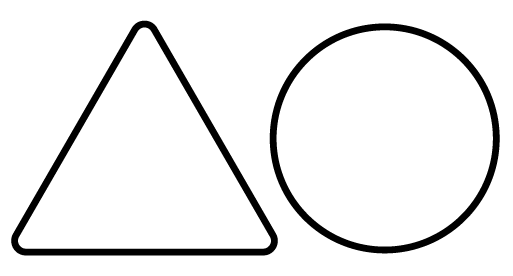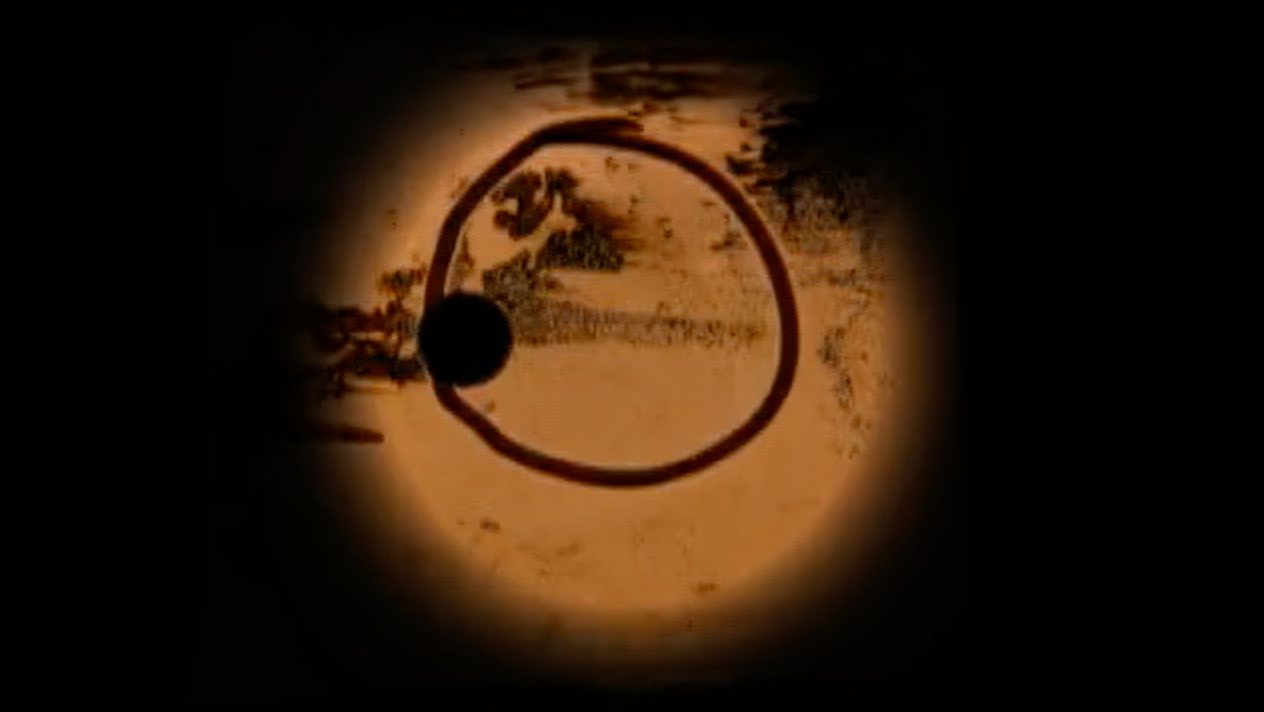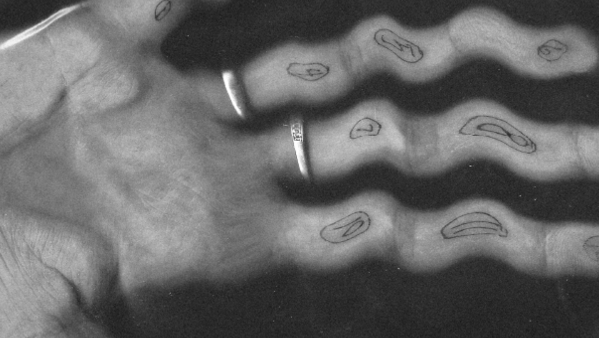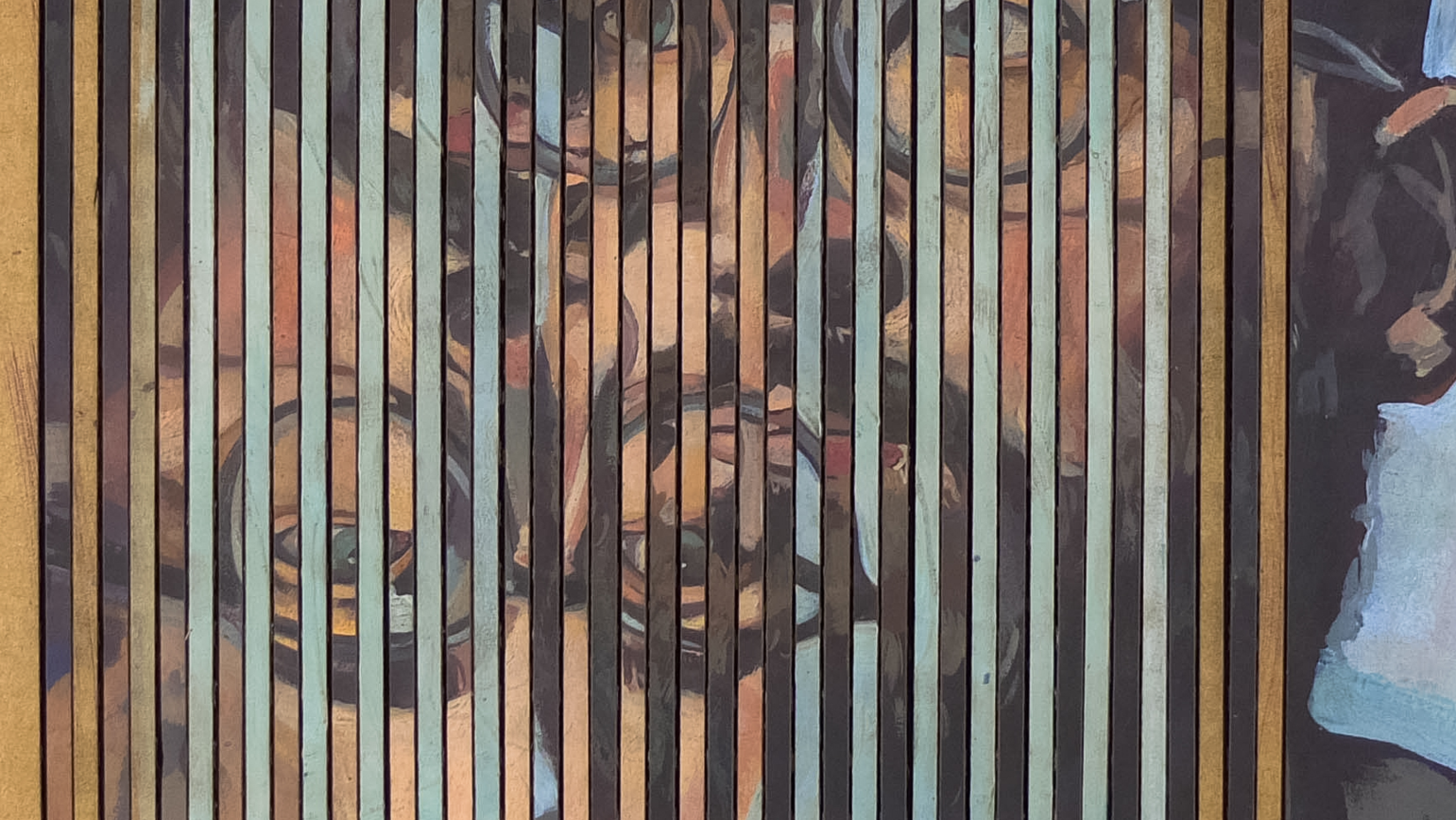How can we reframe our relationship to money as to benefit ourselves as consumers? The following two items seek to explore automatic and mindless spending habits. Sometimes it feels that the economy is working against us citizens while businesses are preying on our impulsivity in regards to owning 'things'. Perhaps the most successful equation to having more money is one in which we simply do not spend our money. These objects attempt to elicit reflection of one's own purchasing routines. They are not future speculative products - as possible items to exist in the future or to ever exist at all. They instead try to blend in with everyday products, placing themselves in a pre-existing aesthetic of goods - as objects that become satirical when contextualized in our realities, ideally becoming humorous in their ridiculousness and unfortunate necessity.
Mindful Spending Deterrent
Have you ever left a store without remembering that you paid? The act of purchasing an item is something we do every day that it becomes so habitual that we easily do it without awareness. This product interrupts this process by forcing the spender to pop each coin out of the blister pack, becoming more and more aware of their act of spending. Furthermore, the packs are divided into 8 sheets, each sheet of coins being 1 hour of an industry standard working wage. This highlights how much one is spending in accordance to their daily wage. With all this information tactilely at hand, one gets the moment to reflect on their purchase and reevaluate the worth of the item, thinking twice before they mindlessly spend.
------------
Mindful Spending Account of Acknowledgement
By taking a moment to review what a purchase can add to one’s life, perception can shift in regards to what one considers valuable. This product implores its users to recognize their potential purchase by filling out a form and categorizing the purchase into 1 of 5 areas that are considered important: education, family, property, transportation, and health. By filling out a form, which must be signed by a witness (the authority that sold you the good, a bystander, your mother), the shopper is forced to reflect upon the long term functions of their purchase and perhaps disrupt a potentially useless and mindless acquisition.
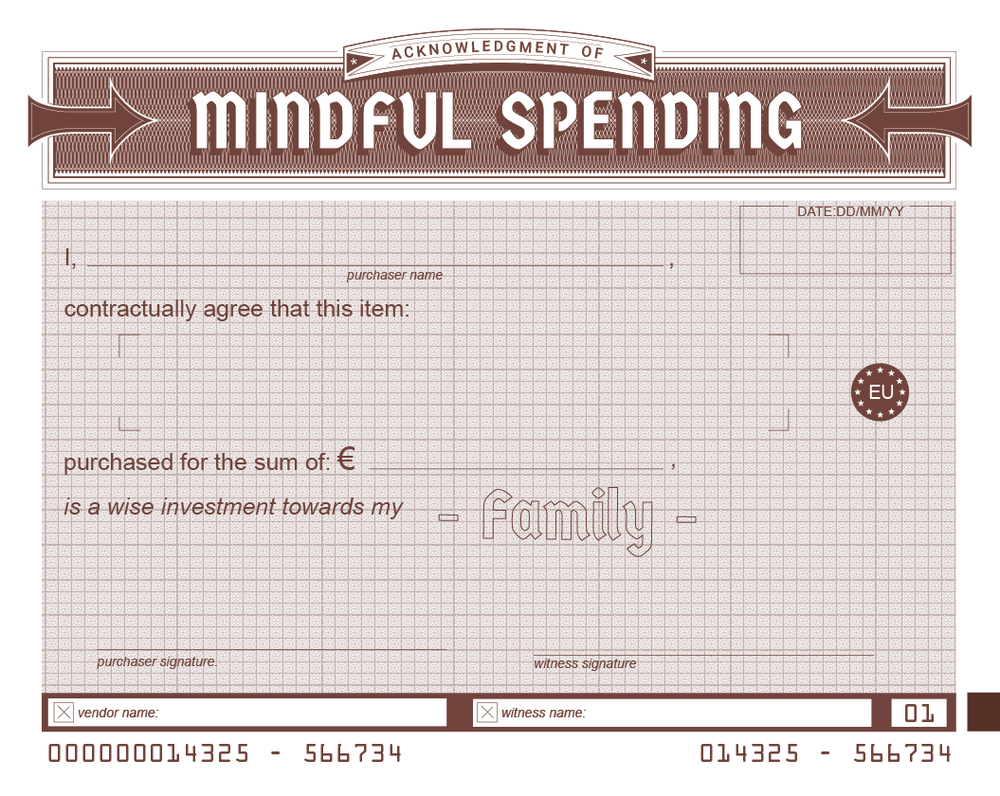
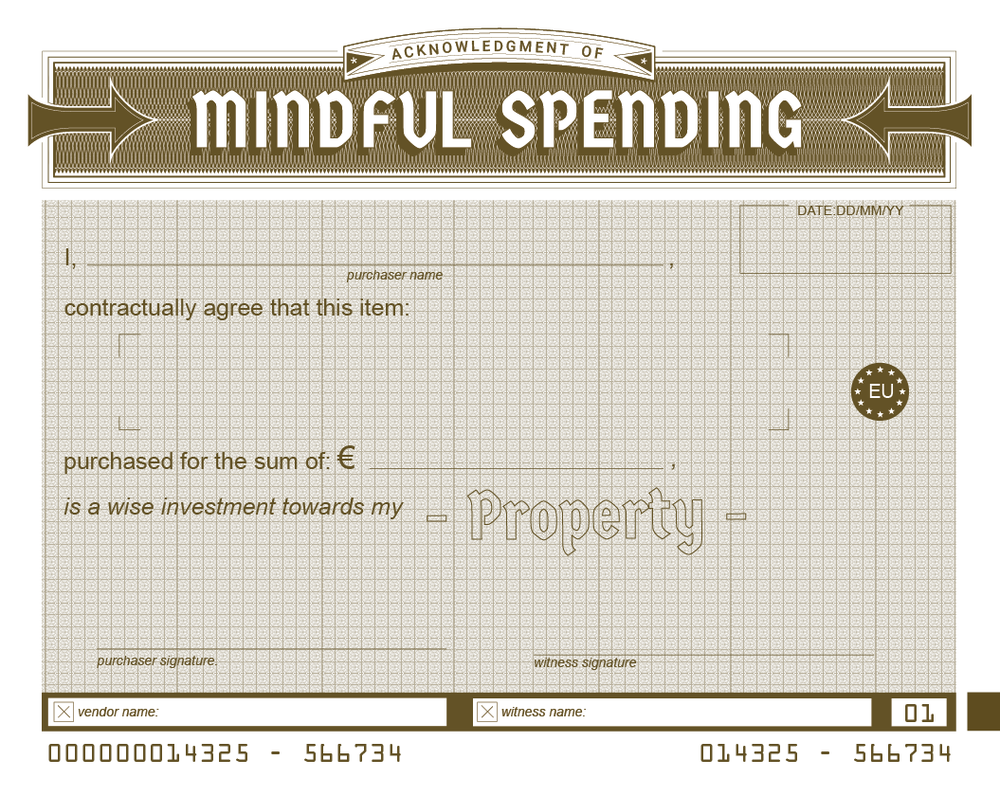
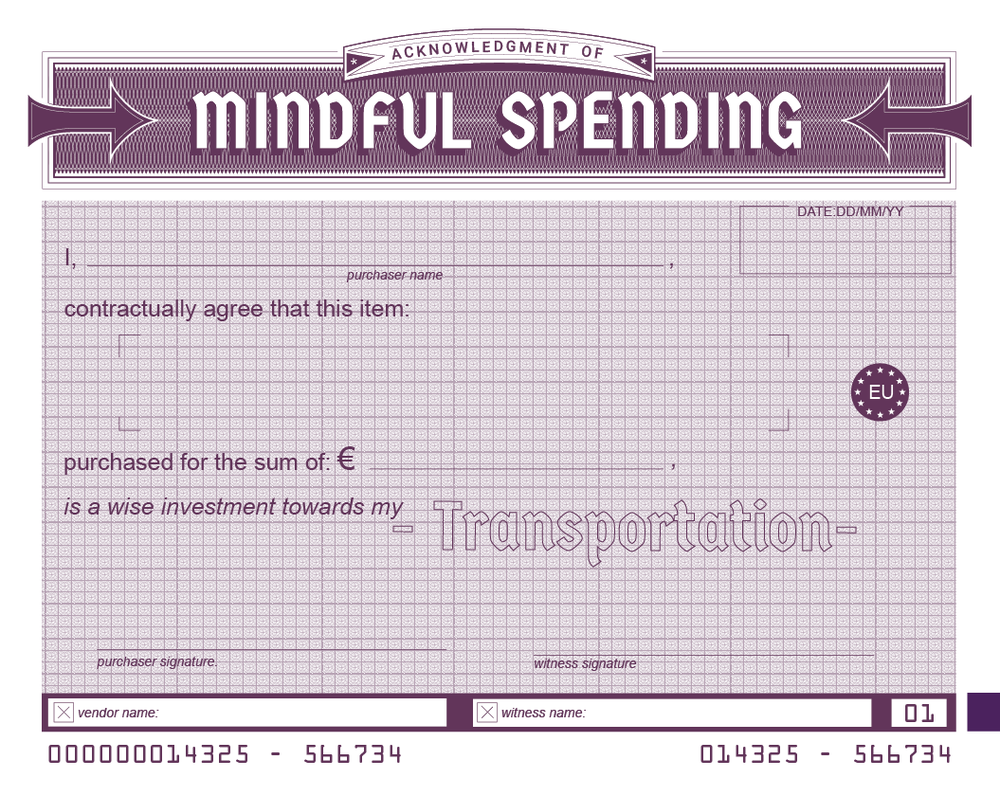
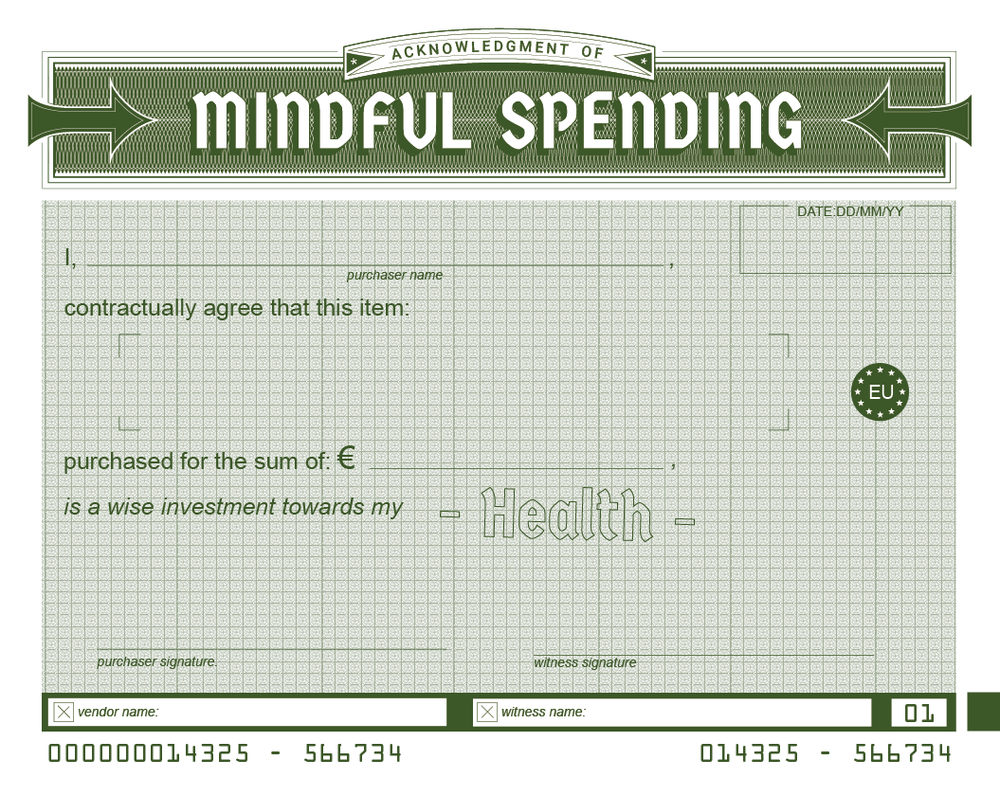
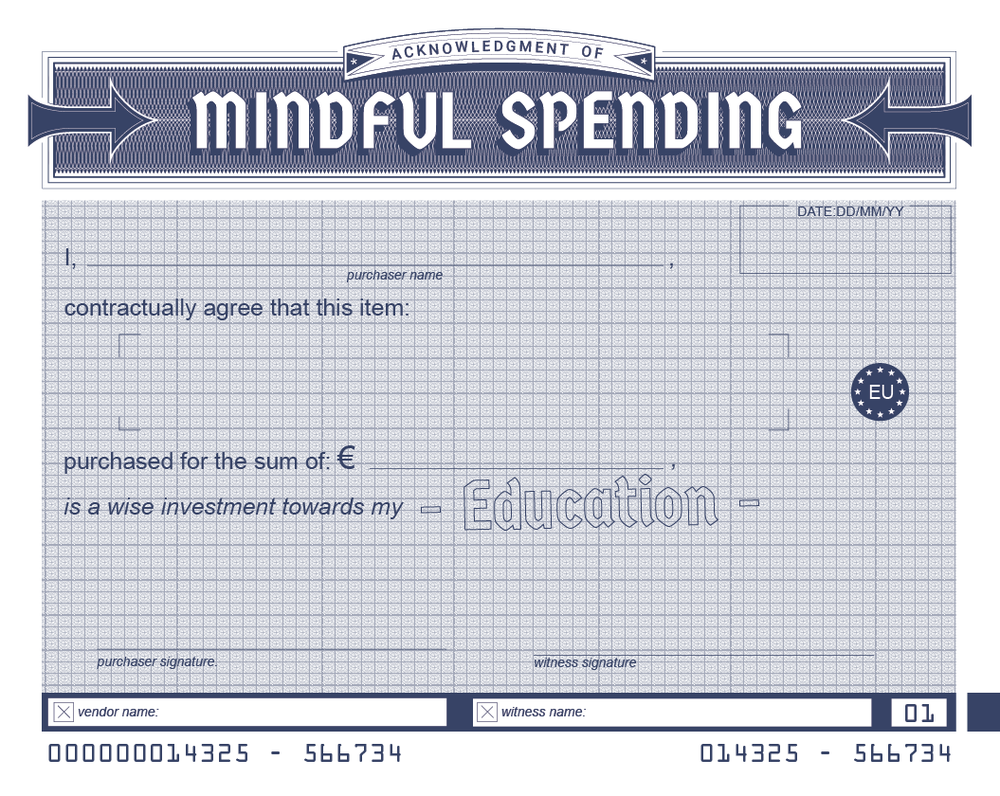
Items created in conjunction with a larger self-initiated project “Ways of Spending: Shifting Perceptions of Purchase in an Age of Unconsidered Personal Expenditure” with Freyja Harris and Robbie More supervised by Prof. Philipp Heidkamp. KISD SS2017.
Verplanken, Bas, and Ayana Sato. "The Psychology of Impulse Buying: An Integrative Self-Regulation Approach." Journal of Consumer Policy (2011): 198-208. Springer. Web. 29 June 2017.
Rook, D. W. (1987). “The buying impulse”. Journal of Consumer Research, 14, 189–199.
